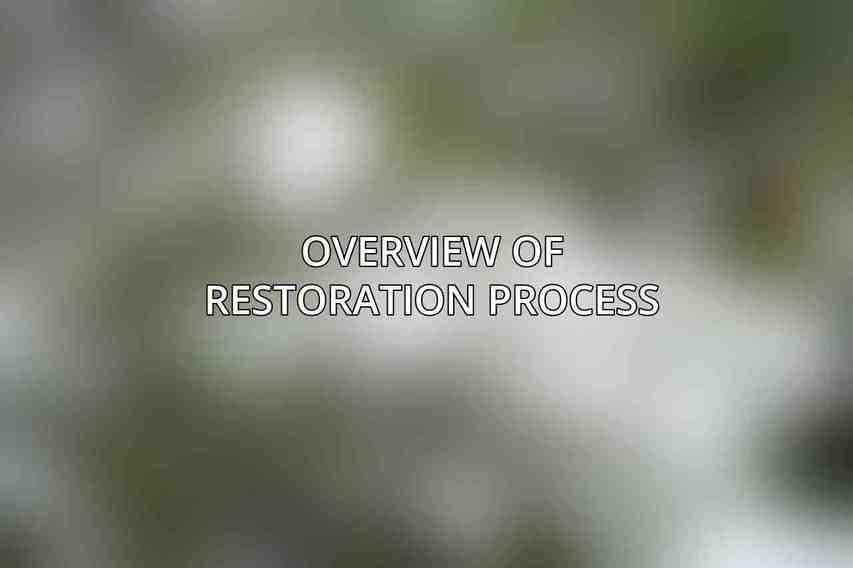Diecast models are detailed replicas of vehicles made from a combination of metals. These models have become prized collectibles among enthusiasts for their intricacy and historical significance. Restoring diecast models is not only a way to preserve these pieces of history but also to increase their value in the collector’s market. The restoration process involves careful cleaning, repair of any damages, and meticulous attention to detail to bring the model back to its former glory.
Importance of Restoration
Restoring diecast models is crucial for maintaining the authenticity and value of these collectibles. Over time, these models can deteriorate due to exposure, wear and tear, or improper storage. By restoring them, collectors can ensure that the original details and features are preserved, which can significantly enhance their value. A well-executed restoration can breathe new life into a vintage diecast model, making it a prized possession for any collector.
Overview of Restoration Process

The restoration of diecast models typically involves a series of steps that require patience, precision, and a keen eye for detail. From the initial assessment to the final detailing, each stage plays a crucial role in bringing the model back to its original condition. Whether it’s addressing surface imperfections, repairing mechanical components, or adding custom details, a comprehensive restoration process can transform a worn-out diecast model into a stunning showcase piece.
Step-by-Step Restoration Guide
1. Assessment and Preparation
Before diving into the restoration process, it’s essential to gather all the necessary tools and materials. Cleaning the diecast model is the first step to remove any dirt or grime that may have accumulated over time. Inspecting the model for any damage helps in assessing the restoration needs accurately. Depending on the condition, disassembling the model may be necessary for thorough cleaning or repair purposes. Explore further with Selecting Diecast Models for Restoration: A Beginner’s Guide
2. Surface Restoration
Surface restoration involves removing old paint and corrosion using suitable methods like chemical strippers or abrasive pads. Buffing and polishing the surface help restore its shine, followed by applying primer and paint to match the original colors. Adding decals or stickers can further enhance the authenticity and details of the model.
3. Mechanical Restoration
Inspecting and repairing moving parts such as wheels and doors is crucial for ensuring the model’s functionality. Lubricating hinges and other mechanisms helps in maintaining smooth operation, while replacing any broken or missing parts with original or aftermarket components is essential to complete the restoration process.
4. Detailing and Finishing
Detailing is the final touch that brings realism to the restored diecast model. Applying weathering effects can simulate age and add character to the model. Adding a clear coat or sealant protects the paint and surface, ensuring long-lasting preservation. Reassembling the model carefully and making final adjustments guarantees that the restoration is complete.
Advanced Restoration Techniques
1. Paint Restoration
For advanced restoration, airbrushing techniques are used for precise color matching and fade effects. Wet sanding and polishing can achieve a smooth, factory-like finish, while using custom or rare paint colors adds authenticity to the model’s appearance.
2. Metal Repair
Repairing broken metal parts through soldering or welding helps restore the structural integrity of the model. Using epoxy or other adhesives for small repairs can be effective in fixing minor damages without compromising the overall look of the model. Dive deeper into Mastering Painting and Detailing in Diecast Restorations
3. Custom Modifications Learn more about Ultimate Guide to Diecast Restoration Projects
Customizing diecast models with aftermarket parts like wheels or suspension can enhance their appearance and performance. Creating unique paint schemes and decals gives each model a personal touch, while detailing with etched metal parts adds a level of realism that sets the restoration apart.
Tips for Beginners
For beginners venturing into diecast model restoration, starting with a simple project can help build confidence and enhance skills gradually. It’s essential to use appropriate tools and techniques to avoid causing any damage to the model. Consulting online forums and resources can provide valuable guidance and tips from experienced restorers. Patience is key in achieving the best results, as each restoration project requires time and meticulous attention to detail. Find more on Essential Tools and Materials for Diecast Model Restoration
Tips for Experienced Hobbyists

Experienced hobbyists looking to take their restoration skills to the next level can explore advanced techniques to create museum-quality restorations. Seeking out rare or custom components can elevate the authenticity and uniqueness of the models. Sharing knowledge and skills with other collectors creates a sense of community and fosters a culture of learning and craftsmanship. Considerations such as entering restored models in competitions or exhibitions can showcase the dedication and talent put into each restoration project.
Diecast model restoration is a rewarding hobby that allows collectors to preserve history, showcase craftsmanship, and unleash creativity. Whether you’re a beginner taking your first steps in restoration or an experienced hobbyist pushing the boundaries of creativity, the ultimate goal remains the same: to breathe new life into these miniature marvels and watch them shine once again in all their glory. Find more on How to Showcase Your Restored Diecast Models Effectively
Frequently Asked Questions
What are diecast models?
Diecast models are replicas of vehicles or other objects made out of diecast metal. They are usually highly detailed and come in various scales. Read more on Upcoming Diecast Model Restoration Workshops Near You
Why would a diecast model need restoration?
Diecast models can degrade over time due to wear and tear, fading paint, or damage from mishandling. Restoration is a way to bring them back to their original glory.
What are some common tools needed for diecast model restoration?
Common tools for diecast model restoration include paints, brushes, sandpaper, cutting tools, glue, and a workbench. It is also important to have proper safety equipment.
What are some tips for beginners interested in diecast model restoration?
For beginners, it’s important to start with small and simple projects to build skills and confidence. Researching techniques and seeking advice from experienced restorers can also be helpful.
How can I prevent further damage to my restored diecast models?
To prevent further damage, it’s important to handle restored diecast models with care, store them in a dust-free environment, and avoid exposing them to direct sunlight or extreme temperatures.

